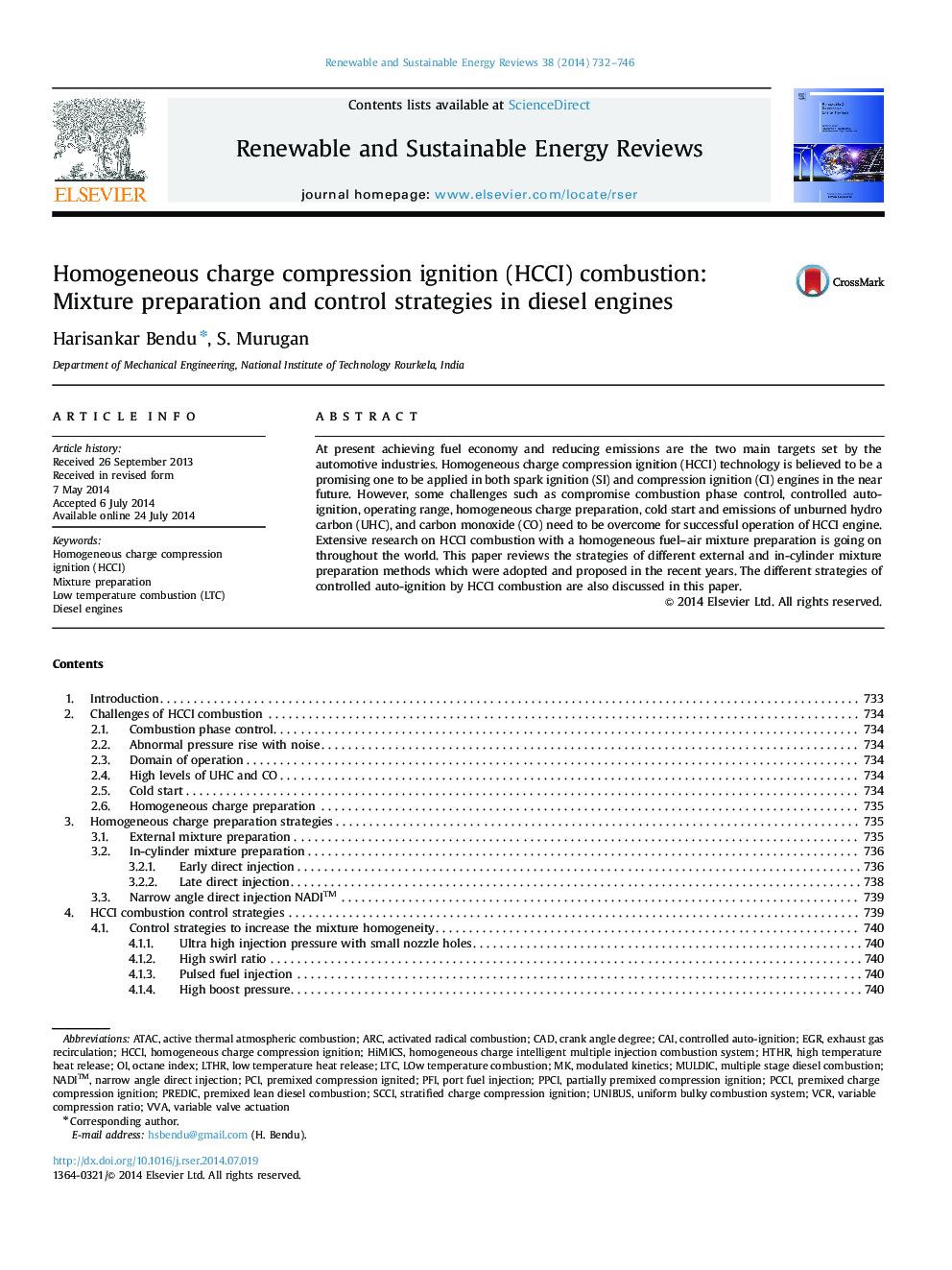| Article ID | Journal | Published Year | Pages | File Type |
|---|---|---|---|---|
| 8119842 | Renewable and Sustainable Energy Reviews | 2014 | 15 Pages |
Abstract
At present achieving fuel economy and reducing emissions are the two main targets set by the automotive industries. Homogeneous charge compression ignition (HCCI) technology is believed to be a promising one to be applied in both spark ignition (SI) and compression ignition (CI) engines in the near future. However, some challenges such as compromise combustion phase control, controlled auto-ignition, operating range, homogeneous charge preparation, cold start and emissions of unburned hydro carbon (UHC), and carbon monoxide (CO) need to be overcome for successful operation of HCCI engine. Extensive research on HCCI combustion with a homogeneous fuel-air mixture preparation is going on throughout the world. This paper reviews the strategies of different external and in-cylinder mixture preparation methods which were adopted and proposed in the recent years. The different strategies of controlled auto-ignition by HCCI combustion are also discussed in this paper.
Keywords
CAIMixture preparationVVALow temperature combustion (LTC)pPCIVCRPCIHTHRPCCIPFILTCLTHREGRHCCILow temperature combustionHomogeneous charge compression ignition (HCCI)Low temperature heat releaseport fuel injectionpremixed charge compression ignitioncrank angle degreeHomogeneous Charge Compression IgnitionVariable valve actuationOctane indexCADATACArcDiesel enginesVariable compression ratioControlled auto-ignitionexhaust gas recirculationHigh temperature heat release
Related Topics
Physical Sciences and Engineering
Energy
Renewable Energy, Sustainability and the Environment
Authors
Harisankar Bendu, S. Murugan,
